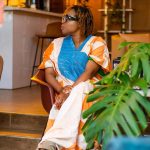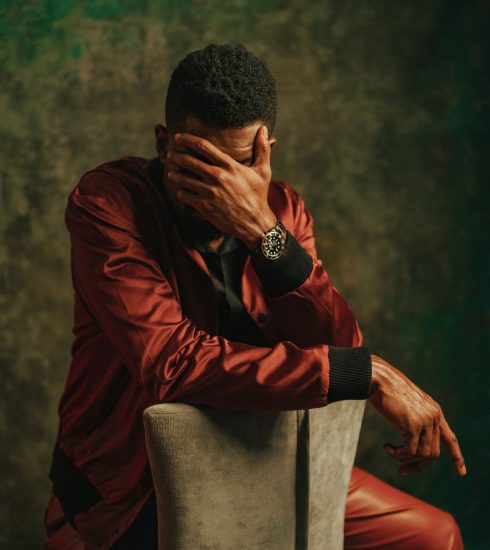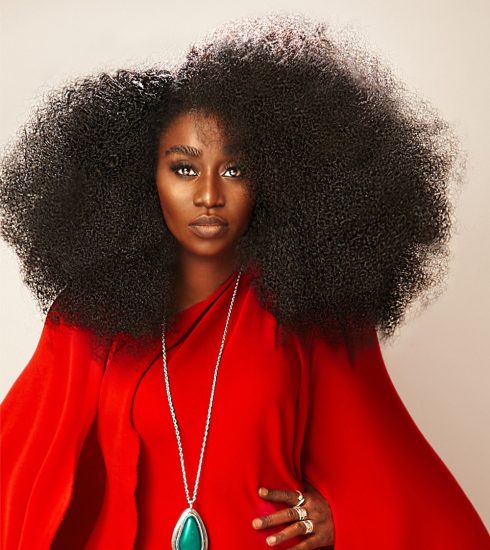The Evolution of Ohi’ Mai ATAFO’
Not many brands understand the importance of evolving, but one brand, ATAFO, is an exception. The ATAFO brand, formerly Mai Atafo, continues to lead the menswear pack even after 12 years. Could this be from the fact that its Creative Director, Ohimai Atafo, once had a marketing career and so understands the intricacies of moving with the hands of time, keeping his thriving business and personal brand relevant? So ingenious are his designs that many tailors and designers continue to copy them. A move Atafo describes as thievery and in no way flattery as far as he is concerned.
In this interview with DOWNTOWN’s Editor, Onah Nwachukwu, Ohimai discusses the many challenges the fashion industry in Nigeria faces along with possible solutions as Atafo prepares for his first stand-alone show in 10 years.
First of all, congratulations on 12 years of ATAFO. You started as Mai Atafo Inspired, then Mai Atafo and now, ATAFO;12 years of constantly evolving. How important is it for a business that has stayed over a decade to evolve?
Evolving is necessary to remain constant and relevant as a brand. Considering I started the business as a young boy without a proper business plan or understanding of how the brand should work or any of those things, evolution was eminent for my brand name because I have outgrown the names that the brand represented at every point in time. With more understanding of your brand’s business and market, you now know exactly how to place yourself and the brand. In trying to leave a long-lasting legacy, people need to know the brand is a human being, not something that is pushed by a human being alone. When you say Gucci today, you don’t expect to see a human being but a fancy bag, amazing sunglasses, or clothes. And when you think of Dior, you’re going to think of luxury items. So when you say ATAFO, you’ll see amazing shoes, jackets, or wedding dresses. It’s all encapsulated in the name; you don’t have to see a human being to understand that it’s an ATAFO effect. That’s what we’re trying to do. Evolution is about understanding where you are, concerning the business, the environment you are in and your customers to deliver something truly a global brand with African heritage.
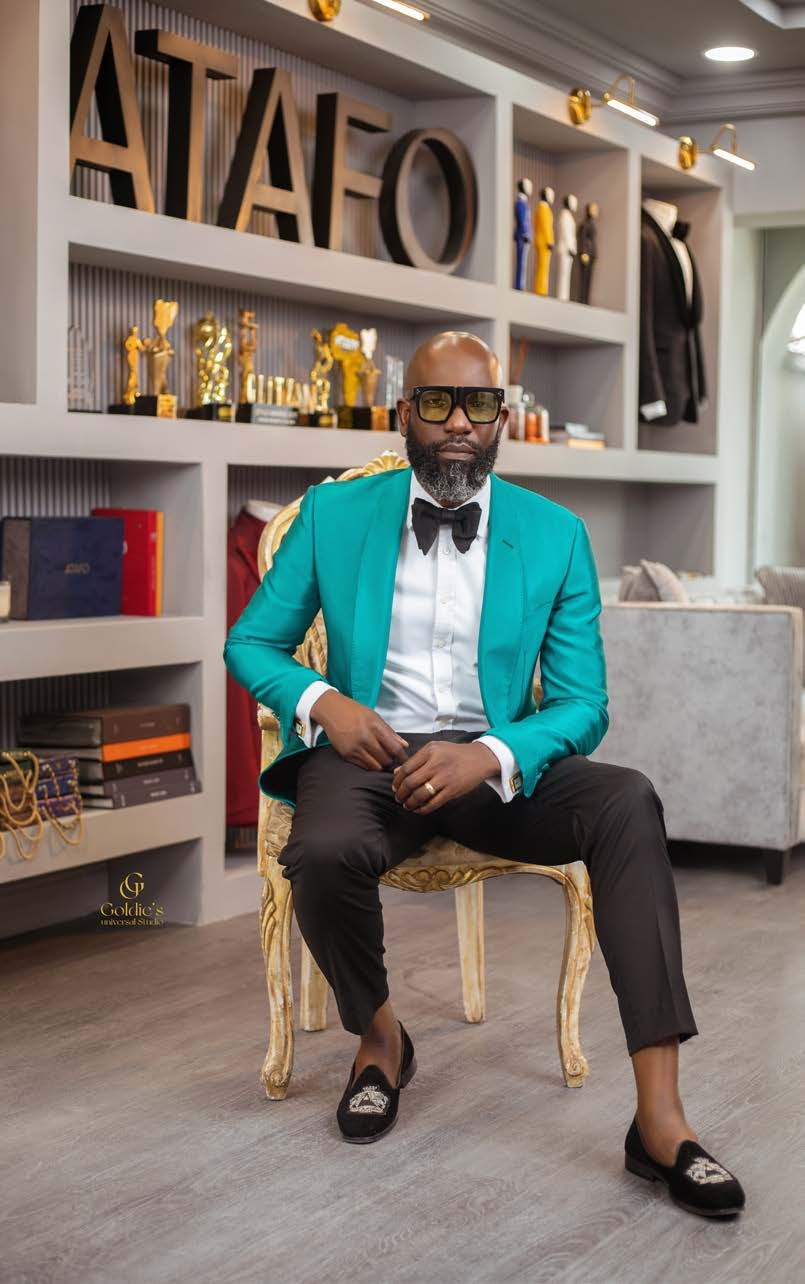
It’s been 11 years since your last show; I was excited when we spoke about the one scheduled for next weekend. Congratulations on that. What took you so long?
I think the show, Dream Wedding, was a platform to showcase my bridal collection. Because at a point in time, there was no fashion show dedicated to bridal. All you had was Fashion Week; sometimes, they showcased bridal, but it was never received correctly because that was not the audience for the product. So, funnily enough, my first Dream Wedding was the launch of the wedding brand, and two years later, we did the second collection that we did, and that’s how we did Dream Wedding 2. But I didn’t feel the need to do another instalment of the wedding show after then. I felt like we could showcase the wedding collection in fashion shows or in the Lagos Bridal Week, which happened once. However, since that bridal week, I’ve also toyed with the idea of another Dream Wedding installation because it’s about time to do another one focused on that. We just have to run through the budget because now it would be RIDICULOUS. Knowing what weddings are these days because we re-acted real-life weddings. If we want to do it this time, we have to get the food, the owambe, the small chops. Everything must be as good as a real wedding. But coming to the fact that I am doing my own stand-alone show, which is different from Dream Wedding, is that when you actually do the normal fashion shows as you did on the platform—Lagos Fashion Week or This Day’s Arise Fashion Week, the difference is that you’re not in control of the narrative. The customers that actually give you value— that come to you every day and are a part of your brand cannot even make it to your fashion show to experience it, and I think that’s wrong because they should be able to experience the brand in all ramifications. And if they miss that part, it doesn’t add, to them, to how they want to see the brand.
Number two, if there’s a certain kind of look and feel you want for your runway or stage, you can’t actually get that because you have to use the template installed by the platform. So, you’re only subjected to that at the end of the day. Though it is a cheaper option for designers, now you have to start weighing the impact of that vis-a-vis, what you get out of it, and that was what pushed me to a point whereby it just feels like it’s only fair enough for me to have my show. I can have my friends, family, and customers sit in, have select influencers that you know bring value to your customers sit in, so it’s a proper, full 360 experience for everyone that is a part of the brand in one shape, form or the other and it gives me control.
So I guess that answers my next question: why haven’t we seen you on LFW or other shows? It’s probably the same answer. No?
It’s a bit of a mix. My Last show was in October 2019. 2020 was the pandemic; we all didn’t understand what was going on. Although there were some virtual shows then, my clothes are occasional clothes, not daily clothes. The daily clothing part of my business which was suited for people in finance and co, weren’t going to work. They were living and working from their joggers at home, so I didn’t see the need to bring out the collection to them in 2020 because it won’t be relevant to where their heads and mind were at that point in time.
2021 was when it felt like we could go out a little bit, and things had moved on, but I was still trying to grasp the change that happened in the system at that time. I was still trying to figure out what I was putting out.
The environment wasn’t inspiring me to do anything that was in line with what I normally did. When that was over, I started seeing life happen, and I understood that “you’re still where you are and where you are, is a good place; your customers are still who they are, and they even have more appreciation for you.” So that break was really necessary for me to evaluate myself and the business, and after that, I realised I was very much on track, doing all the right things which actually dovetailed into this collection, which incited the atelier which is basically my studio where everything happens so let’s show the world everything that happens in here. So even though it’s a new collection, it’s also works of the last 12 years. On the runway, you’ll see things that you’ve seen before in the same way that you’ve seen them before then you’re also seeing new things added to them. But it is also ATAFO being real—this is who we are and where we are going. The evolution of ATAFO, pretty much.
I think when we spoke briefly, you mentioned 80 pieces?
Yes, I think they may even be slightly over that.
What sort of designs and silhouettes are we expecting? Will you also create some designs for the bridal collection?
Interestingly, whilst we will still be showing the bridal collection, it is not a new collection. But it is not something that we have seen on the runway before. It definitely needs some runway life which is what we are going to see at the runway show. There are also some new pieces that people haven’t seen before, but I wouldn’t call it a whole new collection. However because we are telling the story of ATAFO, if we don’t show bridal, then the story is incomplete. We will see traditional wear, a new interpretation of a few things, and men’s wear in the way we know it. There are a few twists here and there, obviously, because I am always projecting for the future. We are very excited by the women’s wear this year; still in the way we know it, but we will see a softer side to the structured business look that gives the women a bit more femininity while they remain boss women. So it would be quite interesting to showcase that. Also, we would see some things inspired by the men’s traditional outfit in the women’s wear for their everyday use. We will now also segue into where would be the ATAFO playground, which is like evening wear for women inspired by menswear tuxedos and menswear suits, and you see a lot of that come to play.
Interestingly, as we’ve never done before, we now have everyday clothing for women. The core of that is really more denim and khaki—things you can literally wear every day. All things being equal, we may even get little athleisure which may involve baseball hats, t-shirts and bomber jackets. We are still working on those.
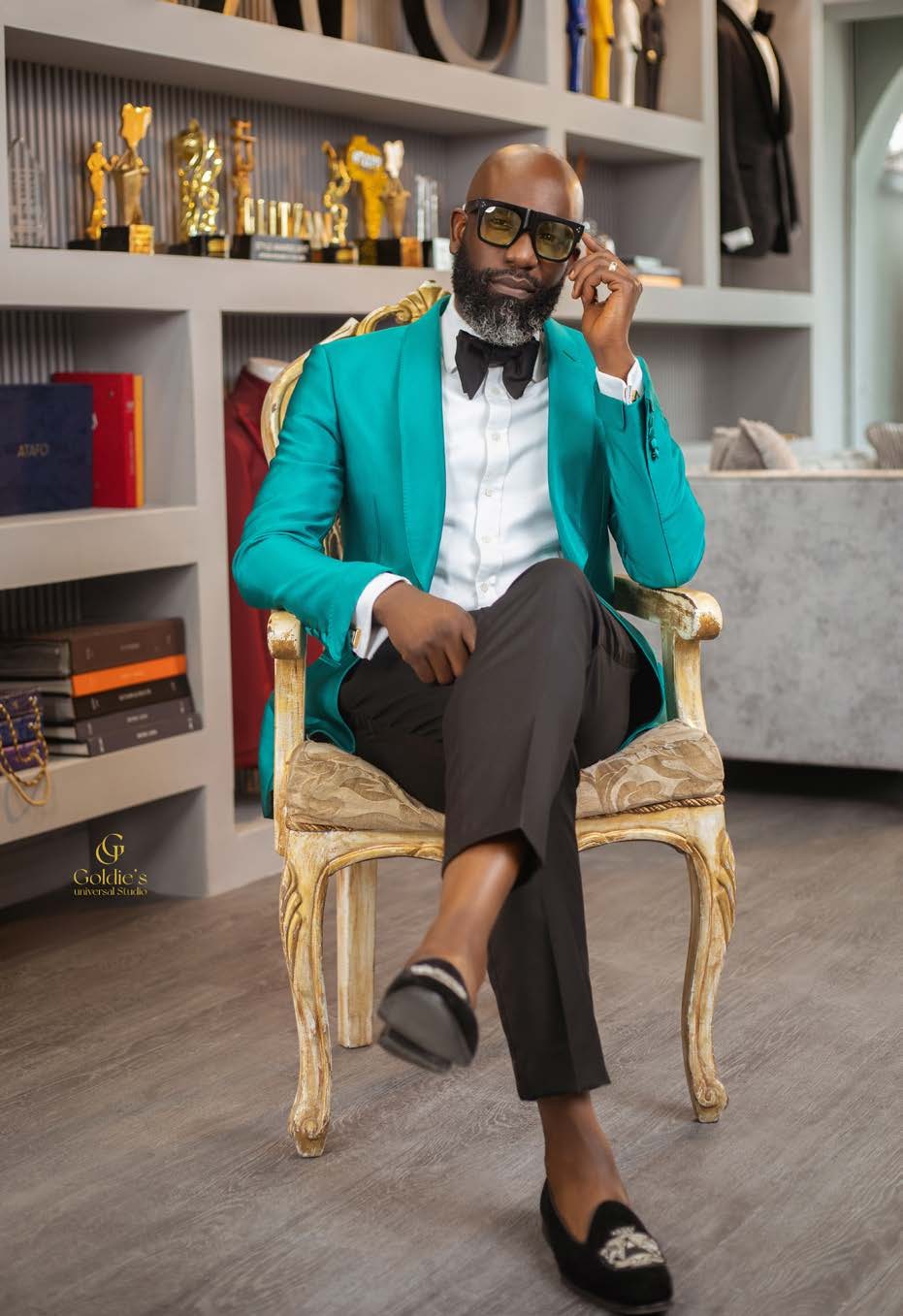
I’m already super excited; that’s amazing. Where would you say you drew inspiration to be able to include the daily wear for women—the pandemic, maybe?
It had nothing to do with the pandemic; it had something to do with life now. That’s because I always look at it that after every situation, you move on. You don’t look back but move on to what you want to see in the future. I went back to things I saw when I was growing up when we’d wear things like denim and khakis, and it was called structure, and that’s what GAP used to do at the time, and I played with that for the women’s everyday wear. I was inspired by trousers and how khaki trousers sat on guys, and I deconstructed a pair of trousers and made it a skirt for women. So it has a fascinating cut and a silhouette which looks like a pair of pants but is actually a skirt. Then on the simplicity, there’s a one-size-fits-all two-way skirt for women. I kept thinking why we’d never done this because it’s actually one-sized, but no matter the size you are, you can wear this skirt; wether you are a size 8 or 20, it’s fine. And you can wear it in two ways. It’s a two-colour thing. You can wear one colour today and flip it over to the other colour tomorrow, and you can reposition it any way you want. You can bring the side to the front and the front to the back. You can do anything you want; you can slant it in the waste area. And it’s literally so easy to do, and I wondered why no one has ever done it. So it’s just me exploring myself and everything around me; anything in the studio we looked at and said, “this was good, but we never put it out there before.” We’re putting everything out there.
So nothing goes to waste.
Not at all. Everybody gets to see the brand as authentic as it is. If it was a miss, you see it as a miss; if it was a win, you see it as a win. You see everything there, it’s like bearing our hearts out, but we’ll be having fun while we do it.
Is that sustainable fashion, in a way?
True! Because, honestly, there are some pieces we just pulled off the rack. We didn’t have to make it again. And it’s like things we’ve had for four years, and I’m sure that when people see them, they will look like they never saw them before. We realised that we showcased a particular garment at Arise Fashion Week in April 2019, and it was only this year that we got the first order for that garment. Between when we got and delivered the first order, we got six more orders for the same thing. If you think I’ve done it and I’m just going to throw it away and do something new, people still want your classics. BECAUSE AGAIN, life moves, and at a point in time, it starts aligning to something you did three years ago. Lagbaja’s second album was a hit, so we went to look for the first album which wasn’t a hit.
Putting up this kind of show certainly won’t be pocket-friendly for a designer to handle alone. Does getting sponsors for a show like yours come easy?
It’s not been friendly at all. I understand why designers don’t want to organise stand-alone shows because the cost is high. But I think it’s something we have to start getting used to. I remember doing my first collection, the cost wasn’t friendly, but I did it. But now it’s different.
I think this is where investors come in, and that’s not something we really have many of in Nigeria – people who are investors in the fashion industry.
Investors and sponsors have to see the show to be sure it’s something they want to be a part of the second time. They only see Lagos Fashion Week and Arise as the big shows. When they realise that individual brands can put in some level of orderliness or status for a presentation that they come and see their potential kind of customers seated, then yes, they would want to sponsor such shows. So in my head, you’re taking the hit now for what will pay me or even the fashion industry in general in the future. Eventually they’ll be happy to say, “I’ll sponsor your show with my new Samsung z-phone10, and we’ll use your show to announce the phone.” When you’re launching a new product, you want the right set of people to see it, and you can bring your people too if you have those interested in the product. The sponsors can do all that at the show. That cuts your cost… guests are coming for the product launch and a fashion show. They get the full experience.
There are ways it can work, but it has to start with us trying to do something first. When they see what we can do, they can decide to jump on it and talk to us.
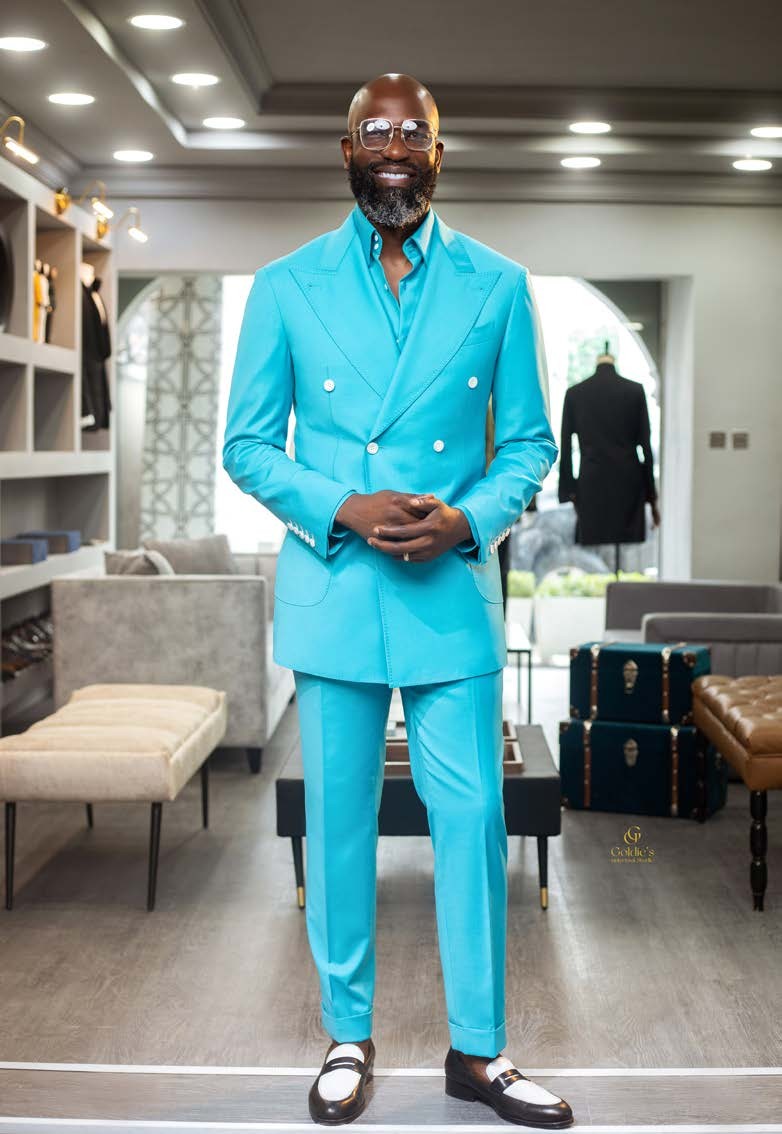
What do you think the fashion industry is missing? What does it need both from an artist’s view and from a brand and retail perspective that will, in turn, bait investors and sponsors?
I think it’s two things. I always like to look at myself first, so I will say we need to present ourselves as solid brands that are valuable to investors by pushing the envelope beyond your garment, even up to your studio.
You have to present yourself as that brand. Secondly, the partners must understand what a fashion designer is very well. Because till now, we’re still—to a large extent, regarded as tailors. We don’t bring in the type of value they like to see. Be it monetary, be it perception, and that’s a bigger pie because a designer is still a tailor at the end of the day. You hear things like, “come to my house and take my measurement.” But you won’t call the bank owner to bring money to your office or home and count it.
I was just wondering if it was because they don’t take the fashion industry as seriously as they would take agriculture or oil, for instance. A typical example would be the Federal government honouring some people from different industries but not one from the fashion industry. Are people not investing because they don’t think the fashion industry is something that could bring about a return on investment?
Correct. A hundred percent. That’s what it is. They still look at us as a joke. It’s like with the music industry. They said things like ‘You smoke weed as a musician, and blah, blah. But now, musicians are living in the same estates as business owners of multinationals, and they own those homes; you cannot but respect them. And when they tell you “this is my figure”, you respect the figure because you know they make that kind of money. So, Burna boy is an international artiste just based in Nigeria. He’s being paid millions of dollars per performance right now around the world. There was a show he was paid three million dollars. You cannot tell Burna boy to collect fifty thousand. You won’t even get a number to offer that kind of nonsense. We just need to know our worth because fashion is a big business around the world – Ralph Lauren is one of the richest men in the world. Period. Not the richest fashion designer. Men. In the world. Valued over 3 billion dollars. There are levels to this thing. When Giorgio Armani celebrated 40 years, there was a national holiday in Milan, Italy. They decorated the city with Giorgio Armani memorabilia. When you see the value that they bring in through imports or exports, and you support that thing, there’s no way you’d not see that “okay, we have a game here to play; we can invest in these brands.” Volvo is one of the biggest exports from Sweden, but next to Volvo was the music band, ABBA, the second biggest export. Basically, the government was supporting ABBA because they were a major export. So you can’t just sit back and say you don’t want to release a single; they will beg you to. So, how do we do that? How do we get to a point whereby the government knows what they’re making?
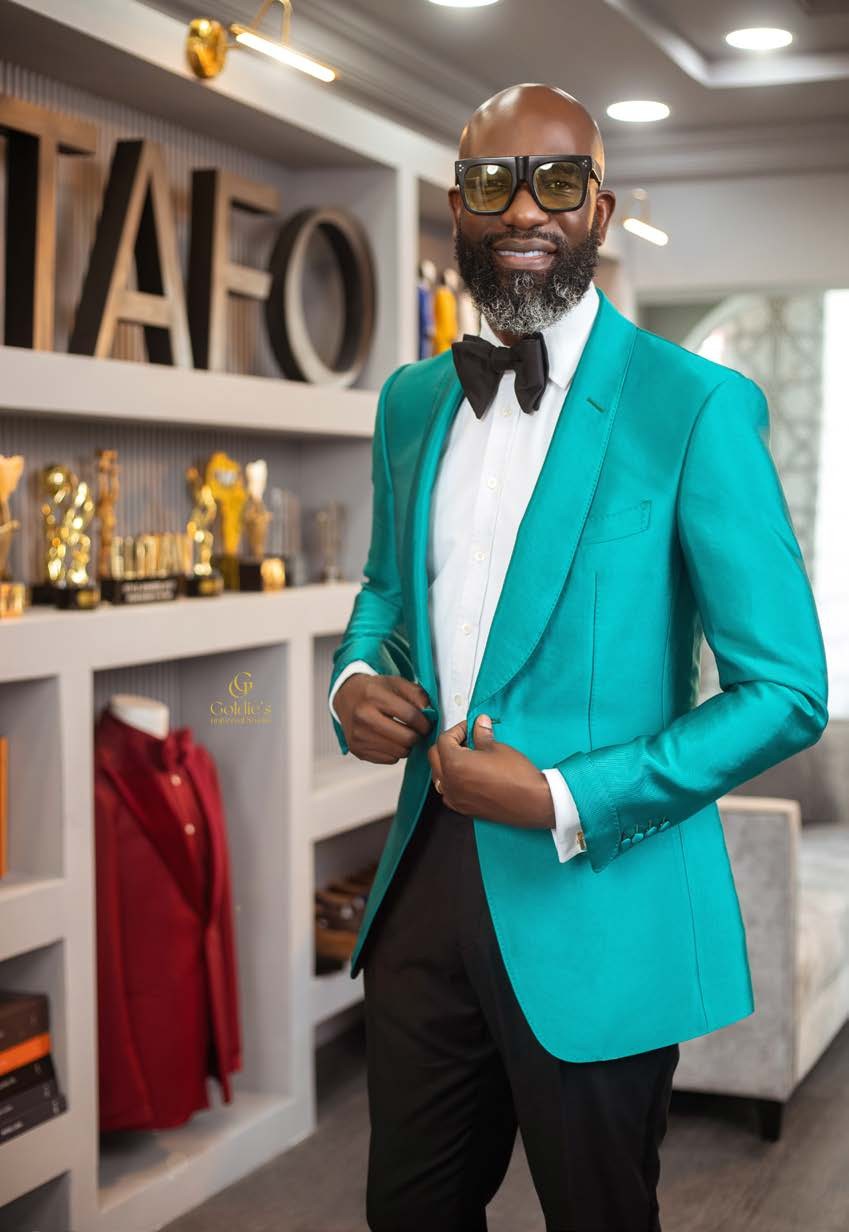
But how do we make them interested? What do the designers have to do?
I think we need to make it by ourselves because they always come around when there is success. The same thing happened with Nollywood; they only came around when Nollywood was getting all the international buzz being the third biggest industry in the world. People now started getting our actors in international movies as part of the Emmys and Oscars, and Netflix started paying people money for content and stuff. Those things don’t happen to the fashion industry; we are not that kind of industry. For us to be as big as a major Italian brand, it will take a whole lot to do that. But we have to start from somewhere. The people who started the music industry are not enjoying what the new guys enjoy. CKay is presently the most streamed artist from Africa with billions of streams, and they are making money off it digitally. So they don’t need the Nigerian government to make money. Ours is different because we have a product; has anybody been able to make a mainstay of a Nigerian indigenous product? The answer is no. And that’s where we fall into. On the other end, we are manufacturers. What do we manufacture in Nigeria that is a global product that they need Nigeria to always give to them? That’s where the problem is; we don’t have a product that sells.
You talked about technology with music; artists’ getting billions of streams helps them. Do you see fashion and technology ever working in the same way?
Fashion and tech is going to be something that happens in the metaverse, and you are buying your designs and clothes as NFT. I think that’s how far it’s going to go. I don’t know if it will go beyond that point because it is tailored good, and that good has to be exported to you for you to wear. It is still something for you to touch and wear. With music, however, if Davido releases a song today, you can listen to it in Yugoslavia, for instance(if there is still a country like that); you don’t need him.
Let’s talk about copying. Do you think this could be managed, maybe by trademarking your design?
It can be. But you know, doing a trademark is quite interesting. A trademark on this kind of thing will set you back somewhere between 500 to a thousand dollars going through the process. You then think to yourself, ‘is it worth it? Why don’t I just make clothes and sell and move on?’ because first of all, the biggest culprits are your local guys here and fellow designers, not the international guys. Even with this new collection, while designing, we said, “let’s watch them as they copy.”
With the international guys, you are hoping they will copy it so you can get settlements in or out of court(laughs).
Asides from trademarking, what other ways can we put a leash on this copy-and-pasting?
The first thing is educating people to realise their actions are wrong; let’s start from there. Some of them don’t know it is wrong; they think that when the customer brings it to them, and they don’t make it, they disrespect their customer, and the customer is always right.
Secondly, it’s also the customers. They take the design to the tailor and ask the tailor to make it. If there are five top designers in the country, I can tell you three of them are copying my stuff regularly. And I’ve actually spoken to one to say, ‘bro, you shouldn’t be doing this.’ He apologised and said he’d never do it again. Two weeks later, he copied another design. He was hoping I wouldn’t see it, but I saw it. So it’s a case of, ‘what do you do?’ I look at it this way: the person who wants to buy from you will buy from you.
Don’t you think that’s flattery?
It’s not flattery; it’s thievery. At the end of the day, you are literally stealing someone’s hard work and sweat.
Having been in the industry for 12 years, what would you say you really long for, for your brand, ATAFO?
I would love that there will be a time when people refer to ATAFO as a brand, and the last thing they want to see is me. That means I’ve achieved the level of success I want to achieve. And that’s on many levels. Firstly, the goods and services of the brand ATAFO meet the customers exactly where they need them; they don’t see any reason to say, “can I speak to your boss?” Or “I think your boss has more of an idea of this than you do.” That means that I have trained competent people to deal with any challenges that come from design to customer service to whatever it is. That means I’ve empowered the next set of people to start living their dreams through my brand and becoming the best of what they can ever be. That means I have showcased my brand beyond the shores of this country, where people are happy to engage with a truly authentic African global brand regardless of its location or origin. That is what I wish for ATAFO and myself.
A lawyer by training, Onah packs over a decade of experience in both editorial and managerial capacities.
Nwachukwu began her career at THISDAY Style before her appointment as Editor of HELLO! NIGERIA, the sole African franchise of the international magazine, HELLO!
Thereafter, she served as Group Editor-in-Chief at TrueTales Publications, publishers of Complete Fashion, HINTS, HELLO! NIGERIA and Beauty Box.
Onah has interviewed among others, Forbes’ richest black woman in the world, Folorunso Alakija, seven-time grand slam tennis champion, Roger Federer, singer Miley Cyrus, Ex Governor of Akwa Ibom State, Godswill Akpabio while coordinating interviews with Nigerian football legend, Jayjay Okocha, and many more.
In the past, she organised a few publicity projects for the Italian Consulate, Lagos, Nigeria under one time Consul General, Stefano De Leo. Some other brands under her portfolio during her time as a Publicity Consultant include international brands in Nigeria such as Grey Goose, Martini, Escudo Rojo, Chivas, Martell Absolut Elix, and Absolut Vodka.
Onah currently works as the Editor of TheWill DOWNTOWN.
